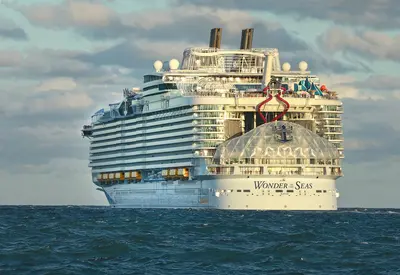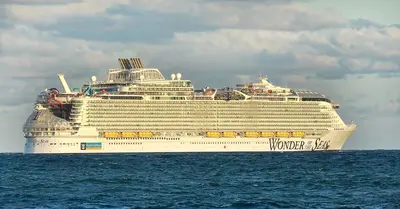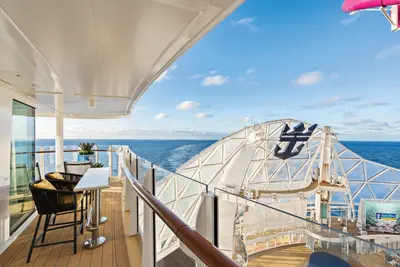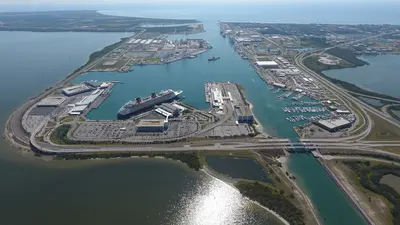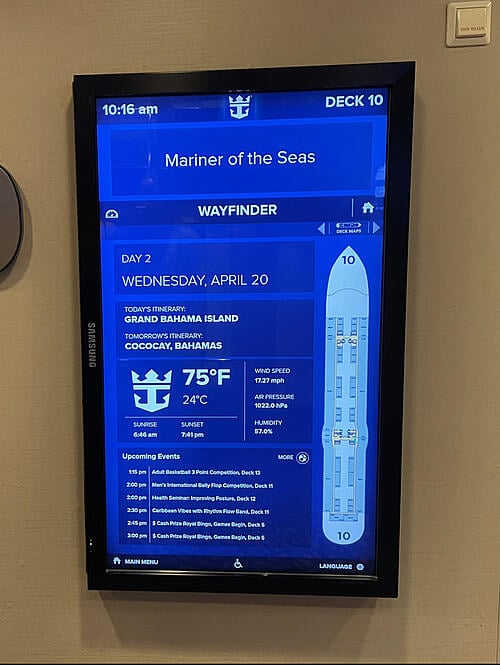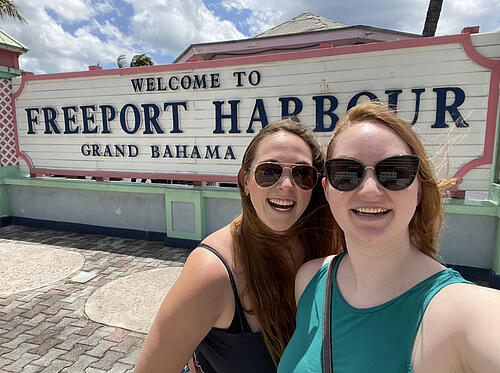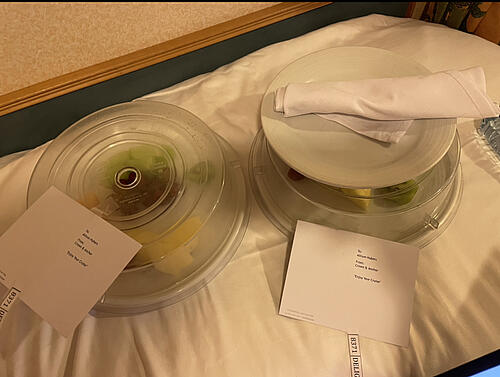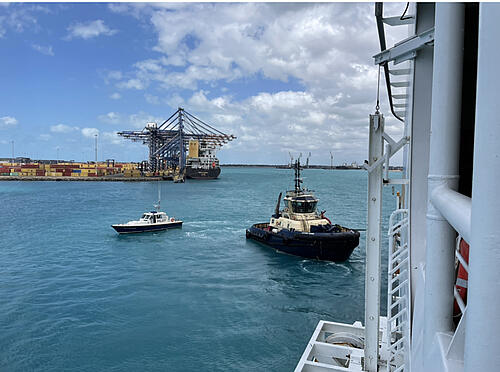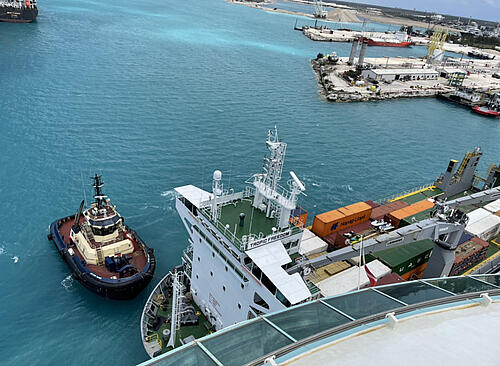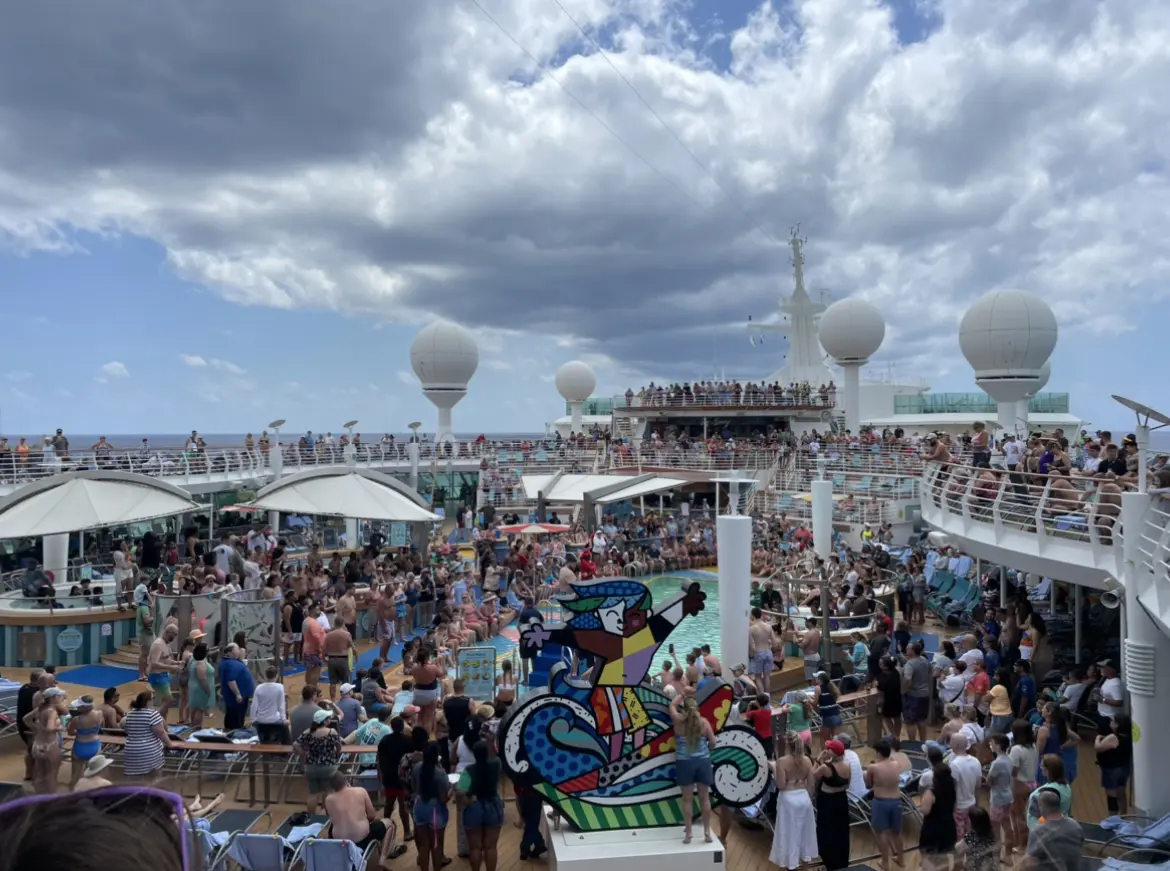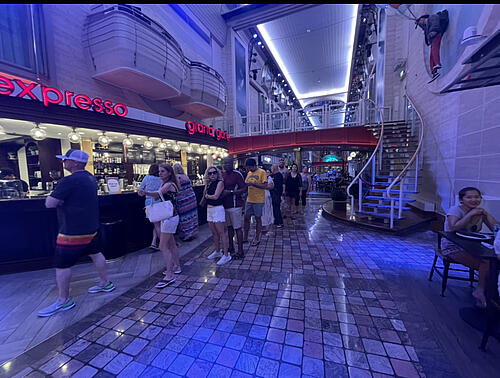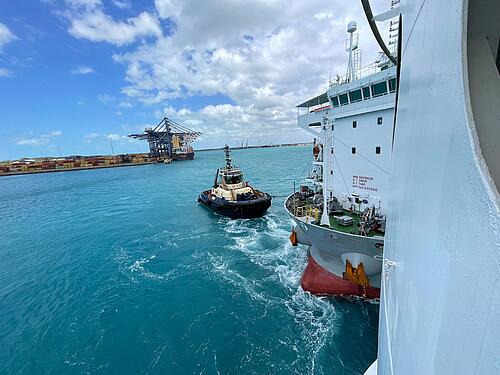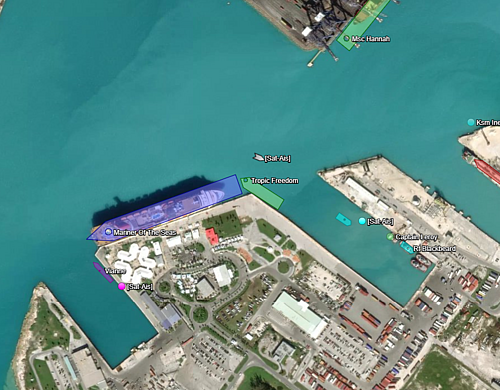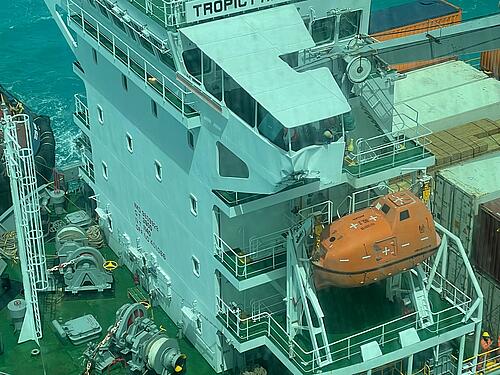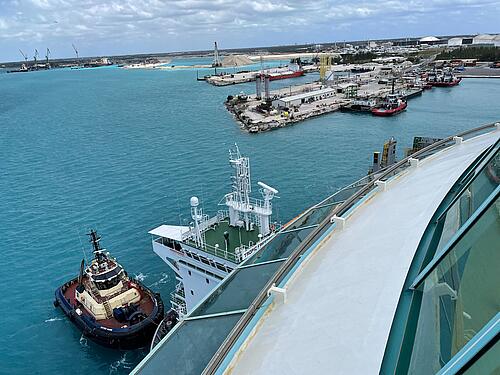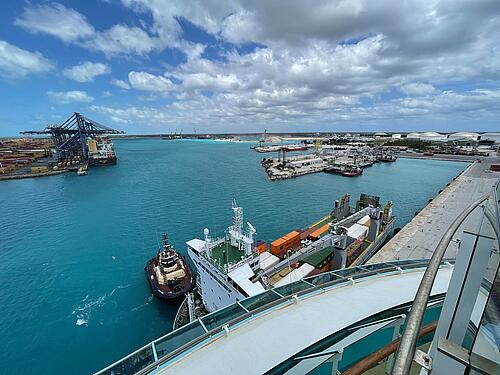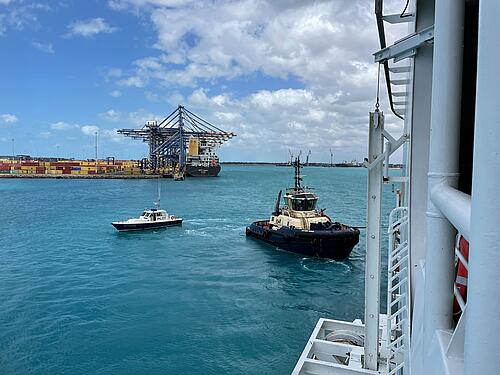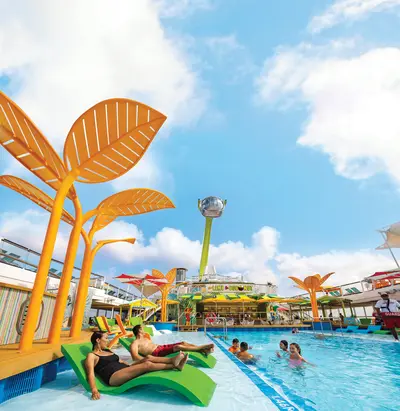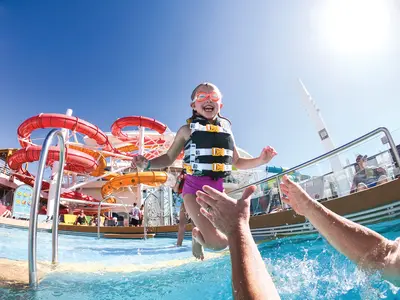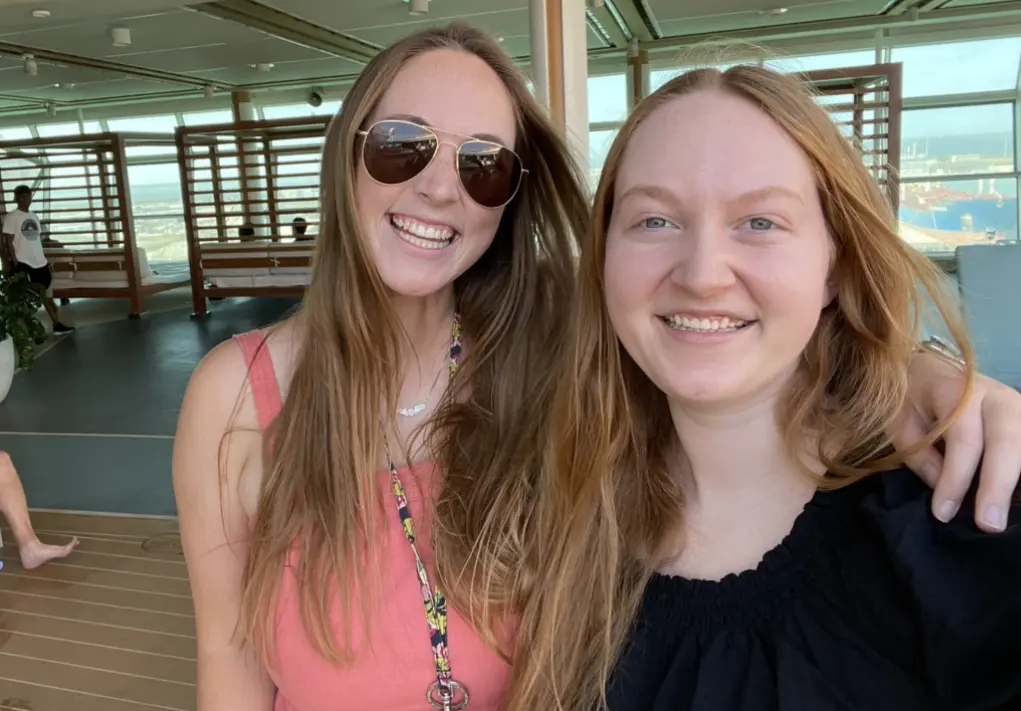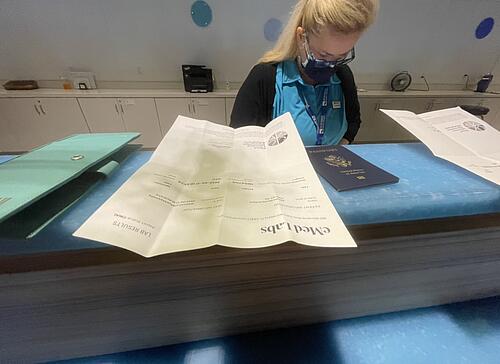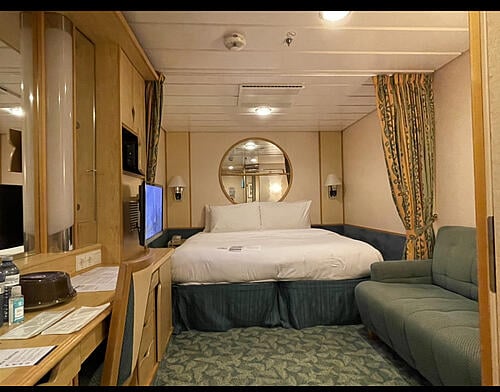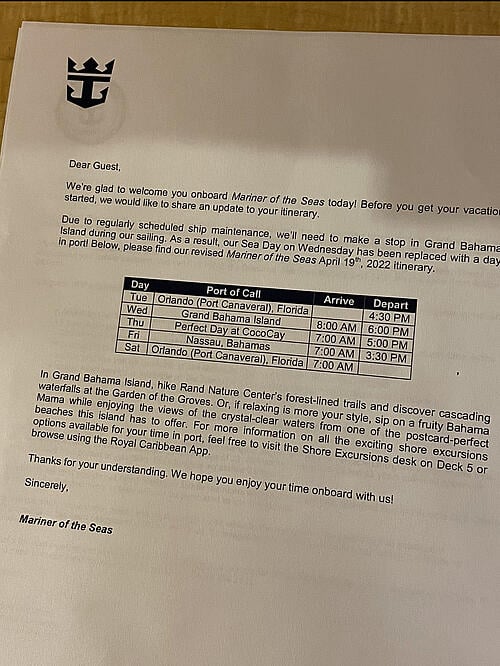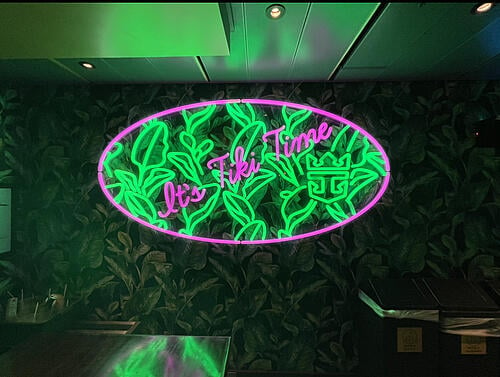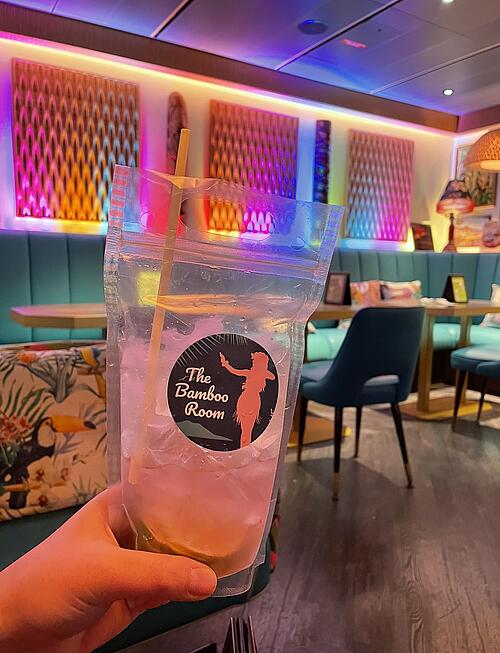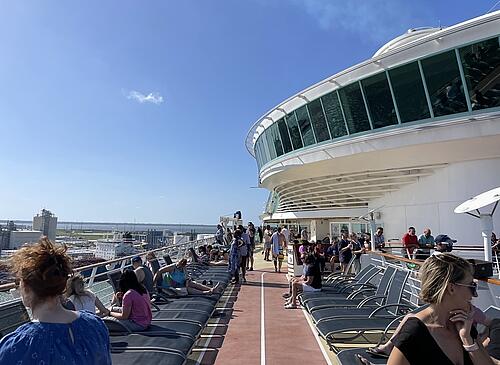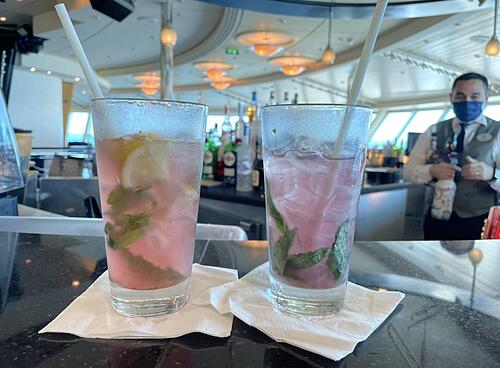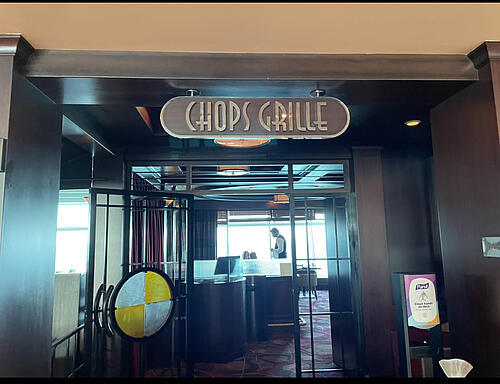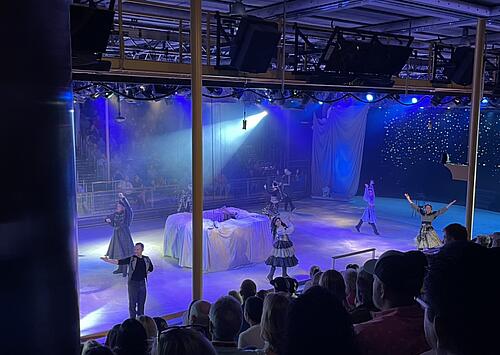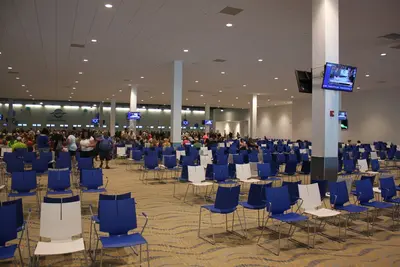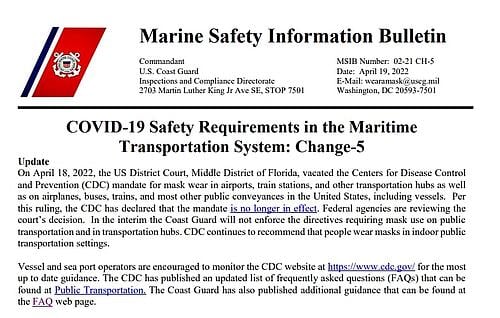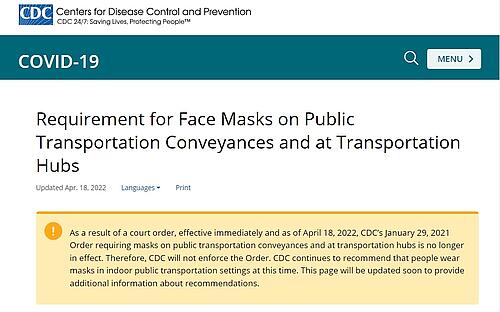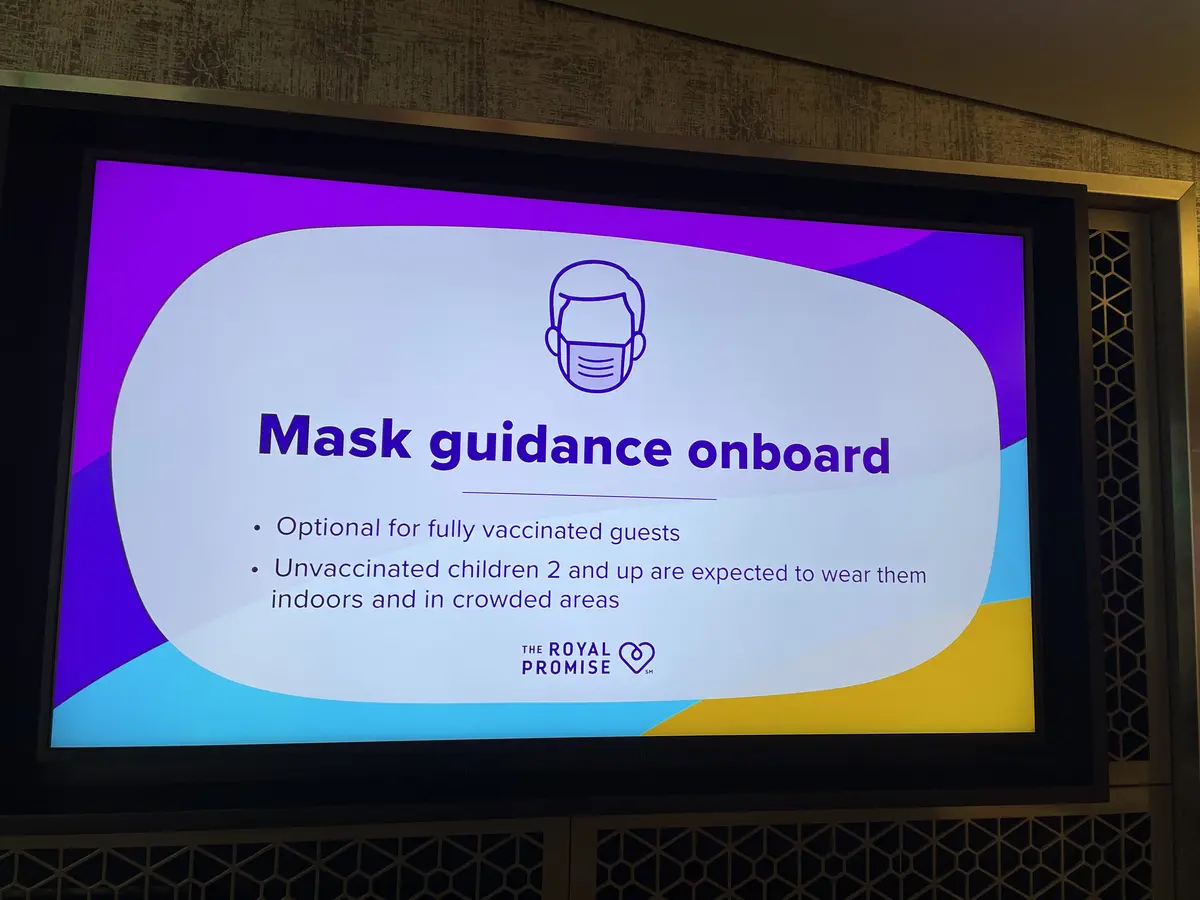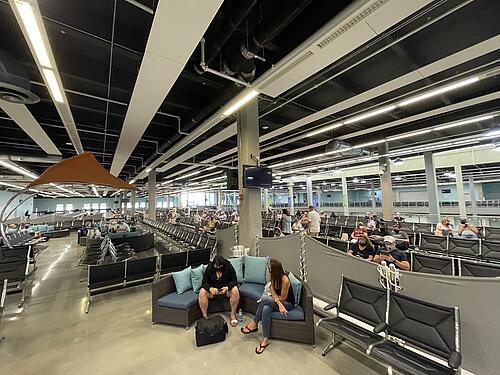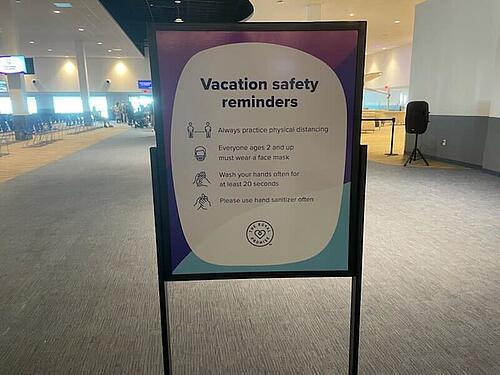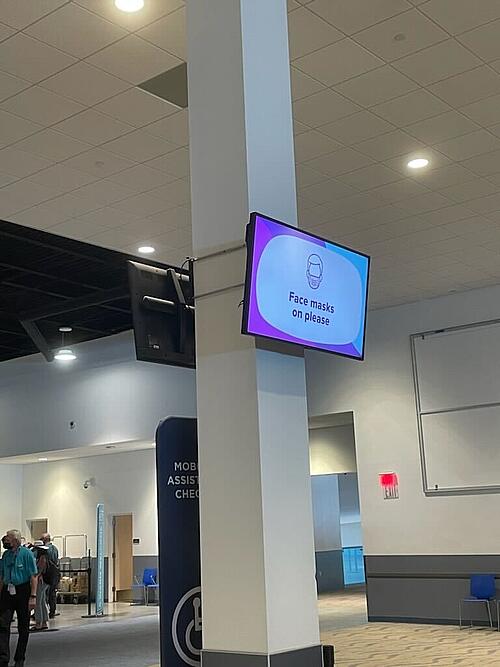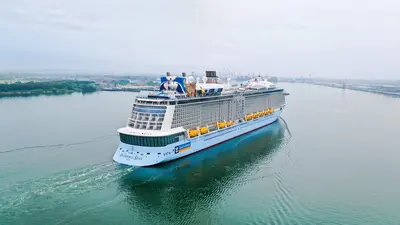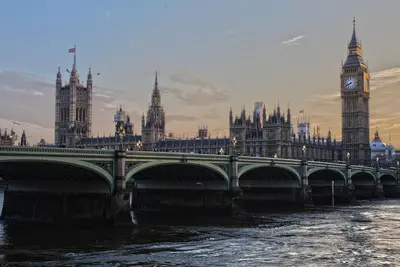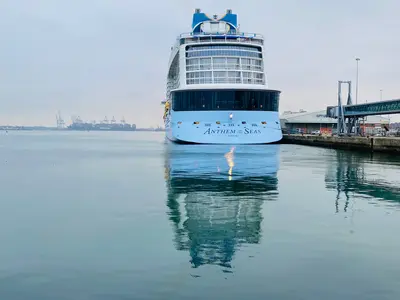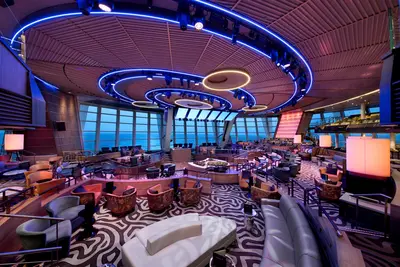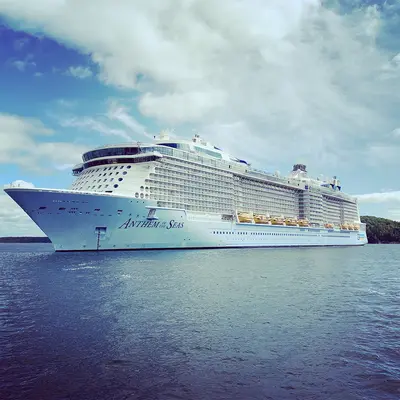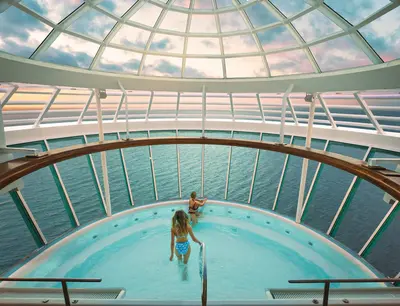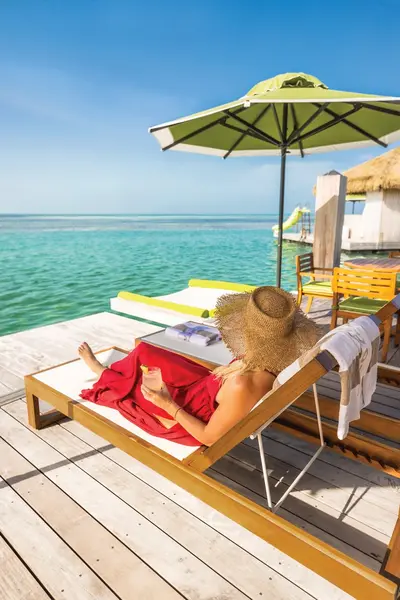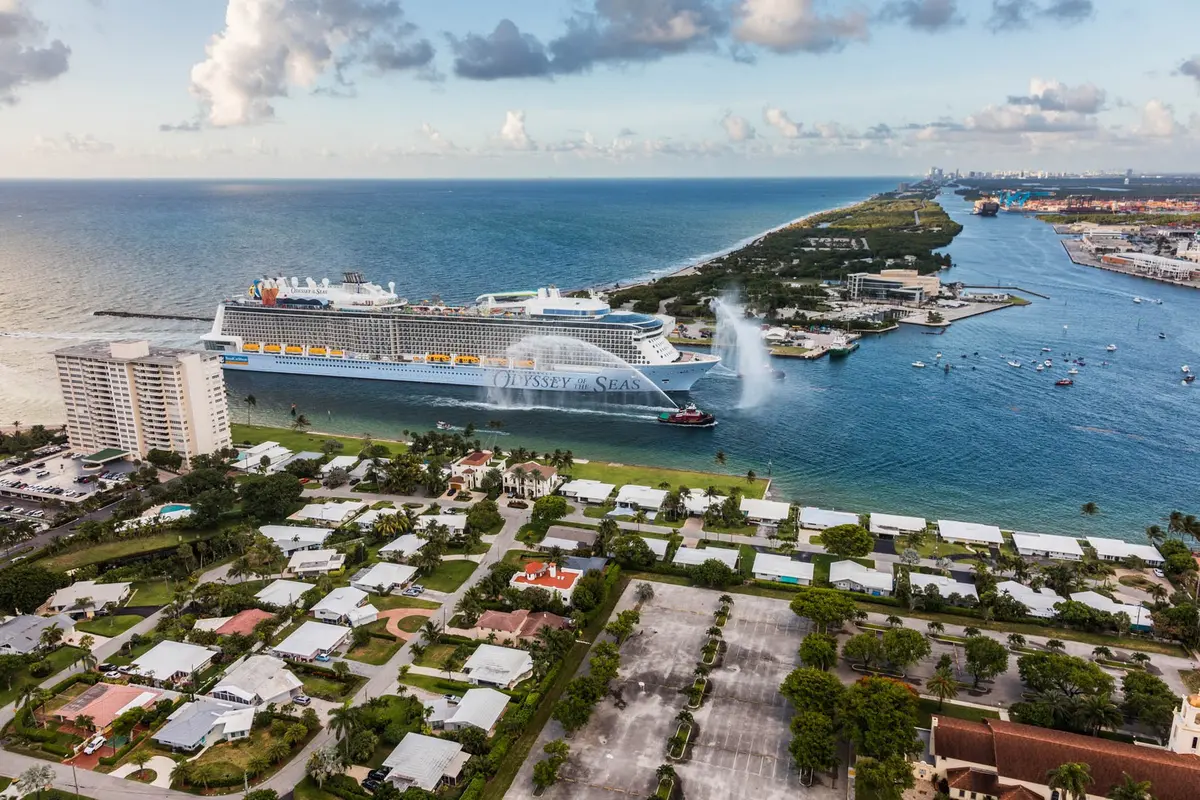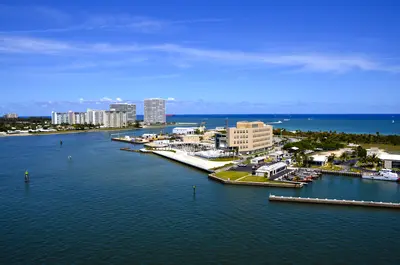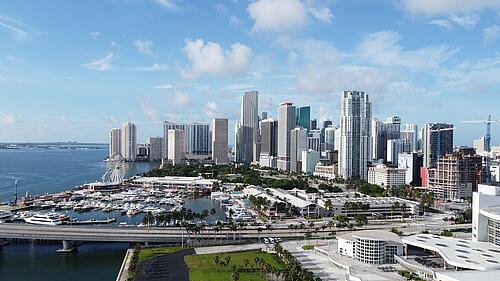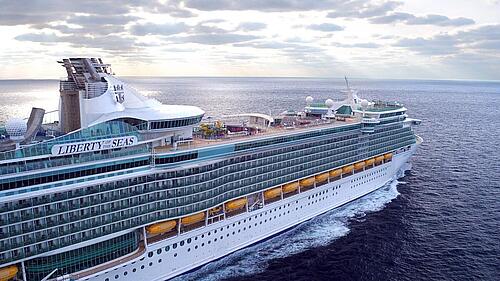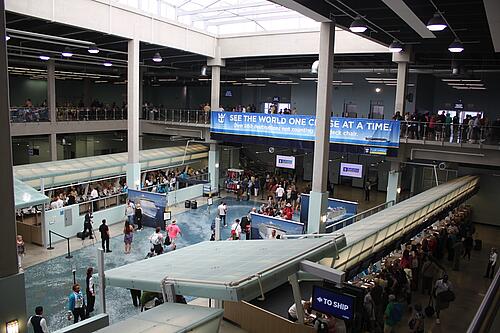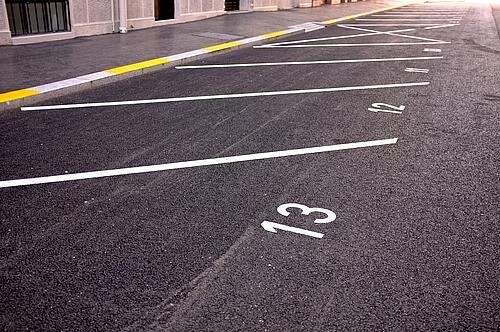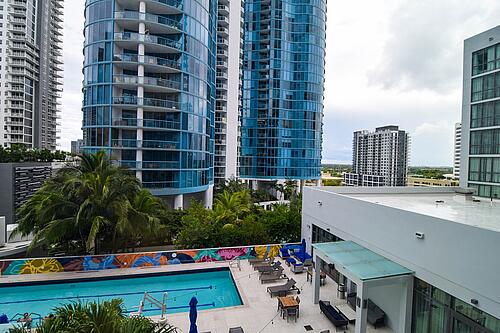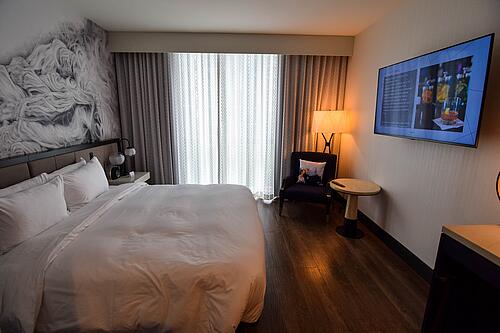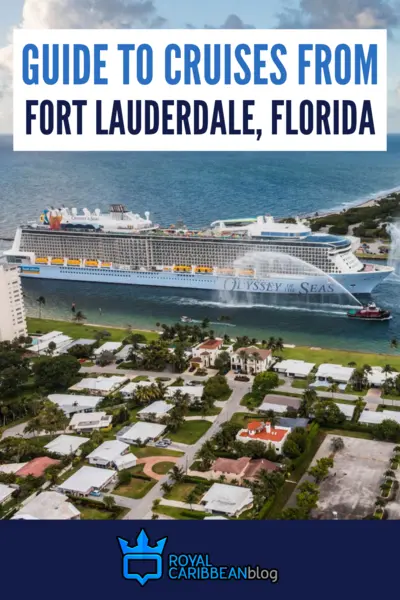Odyssey of the Seas and Wonder of the Seas are some of Royal Caribbean’s newer cruise ships, but they each belong to a different class, with each ship offering its own set of amenities, dining options, and entertainment.
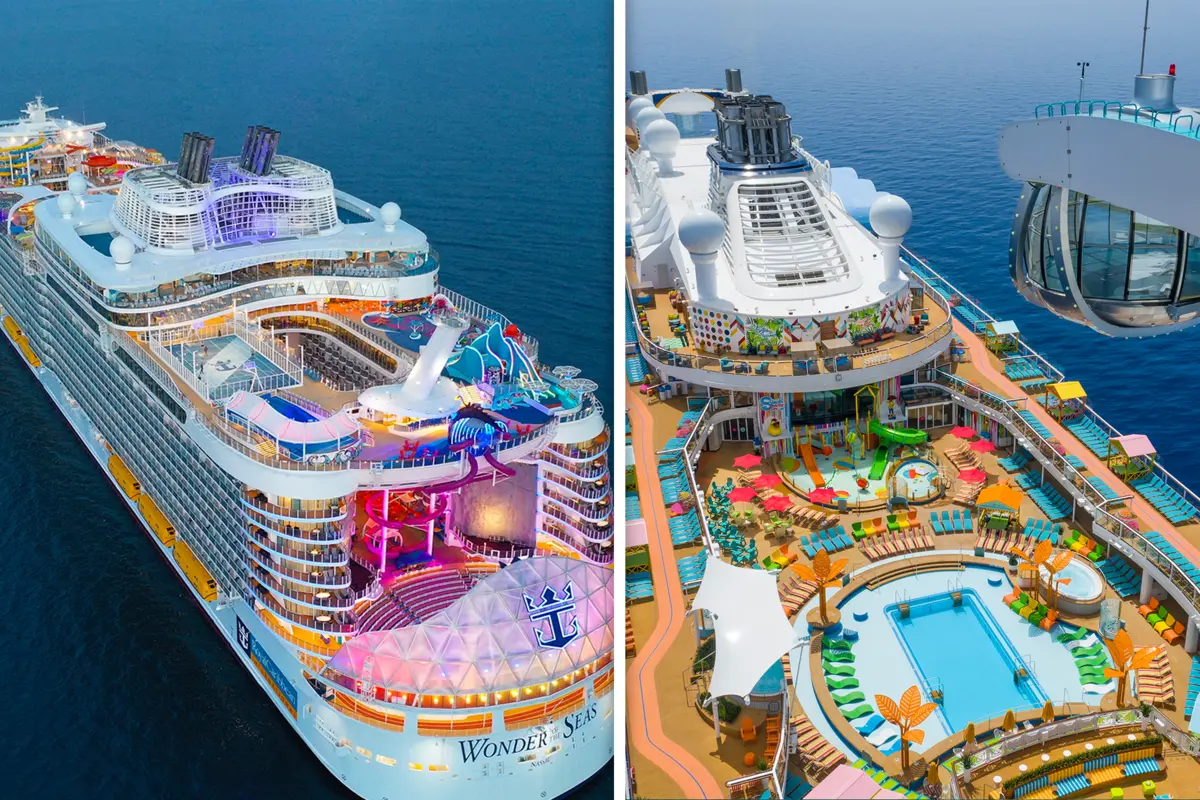
If you’re looking to book a cruise on the latest and greatest of Royal Caribbean’s ships, both Odyssey of the Seas and Wonder of the Seas are sure to make for a wonderful cruise experience. Both ships fit over five thousand passengers, offer activities for all ages, have no shortage of restaurants and lounges, and visit exciting destinations in the Caribbean and Europe.
While the ships share many similar features, they differ in layout, size, and onboard offerings. Let’s take a look at how Odyssey of the Seas and Wonder of the Seas compare.
Overview
Odyssey of the Seas is the 5th ship in Royal Caribbean’s Quantum Class. She has a maximum capacity of 5,510 guests, length of 1,138 feet, width of 136 feet, and measures 167,704 in gross tonnage. Her maiden voyage was on July 31, 2021.
Wonder of the Seas is the 5th ship in Royal Caribbean’s Oasis Class and is currently the largest cruise ship in the world. She has a maximum capacity of 6,988 guests, length of 1,188 feet, width of 210 feet, and measures 236,857 in gross tonnage. Her maiden voyage was on March 4, 2022.
Layouts
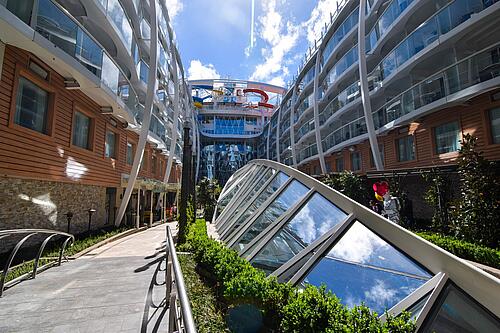
As an Oasis Class ship, Wonder of the Seas is split into distinct neighborhoods. Because Oasis Class ships can accommodate so many guests, it’s important to have a ship layout designed to spread guests around the ship and avoid overcrowding in any one area.
These are the eight neighborhoods on Wonder of the Seas:
- The Boardwalk, an outdoor area in the ship’s aft with a carousel, restaurants, an arcade, candy shop, the AquaTheater, and rock climbing
- Central Park, an outdoor park in the middle of the ship filled with plants, flowers, restaurants, and retail venues
- The Pool and Sports Zone, where guests can enjoy pools, whirlpools, waterslides, and sports activities
- The Royal Promenade, the main thoroughfare on Wonder of the Seas with dining, shopping, bars, guest service areas, and more
- Entertainment Place, home to the casino, ice skating rink, comedy club, and Royal Theater
- Vitality Spa and Fitness, home to the ship’s wellness facilities
- Youth Zone, the hub of Royal Caribbean’s Adventure Ocean programming
- Suite Neighborhood, an enclave just for suite guests with a private lounge, restaurant, and sun deck
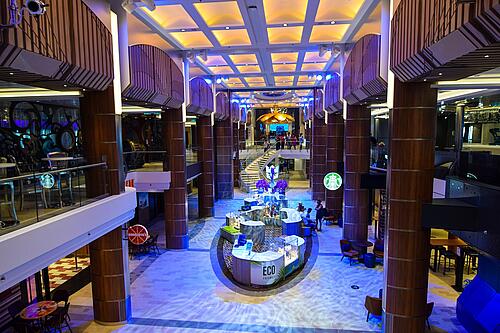
Odyssey of the Seas does not have the same neighborhood concept as the Oasis Class, but the ship’s layout can be categorized into a few distinct areas:
- The Via, where guests can enjoy artwork, dining, shopping, Next Cruise, and Two70.
- The Royal Esplanade, a two-story thoroughfare with dining, bars, lounges, shopping, and guest service areas
- The Pool Deck, where guests will find pools, whirlpools, bars, and the North Star
- The Sports/Seaplex, home to sports activities like indoor skydiving, bungee jumping, and bumper cars
Odyssey of the Seas is built more like a traditional cruise ship whereas Wonder of the Seas has a split-layout, where sections of the ship are split down the middle to allow for areas like Central Park and the Boardwalk.
Dining

As the newest ships in Royal Caribbean’s fleet, both Odyssey of the Seas and Wonder of the Seas have a large variety of dining options onboard. The following dining venues can be found on either ship:
- Main Dining Room
- Windjammer Cafe
- Solarium Bistro
- Coastal Kitchen
- Cafe Promenade
- Sorrento’s
- Chef’s Table
- El Loco Fresh
- Wonderland
- Chops Grille
- Giovanni’s Italian Kitchen & Wine Bar
- Izumi hibachi (teppanyaki) & sushi
- Playmakers Sports Bar & Arcade
- Starbucks

As Wonder of the Seas is a bigger ship, there are a few more dining options to note that are not found on Odyssey of the Seas:
- The Mason Jar, a southern-inspired restaurant featuring dishes from around the American south with both a brunch and dinner menu
- Park Cafe, a complimentary grab-and-go option for breakfast sandwiches, bagels, pastries, soups, sandwiches, and salads
- 150 Central Park, a more upscale venue focused on sourcing local ingredients. Menu highlights include the pumpkin bisque, roasted tenderloin, and fried cheesecake
- Johnny Rockets, offering classic American fare including hamburgers and milkshakes
- Boardwalk Dog House, serving up hot dogs, sausages, and bratwurst
- Hooked Seafood, offering a taste of New England through diverse seafood options from clam & crab chowder to the Maine lobster roll
Cruising on Wonder of the Seas gives the opportunity to enjoy outdoor dining venues, with Park Cafe, Chops Grille, and Giovanni’s Italian Kitchen offering both indoor and outdoor seating. Odyssey of the Seas does not have any outdoor dining available aside from El Loco Fresh on the pool deck.
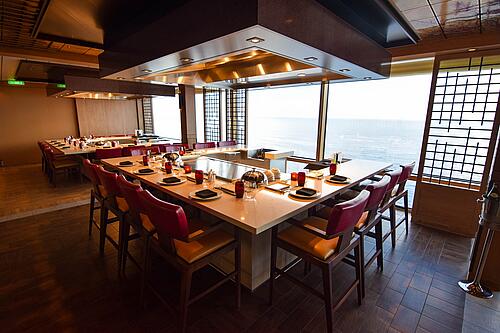
Odyssey of the Seas has a larger hibachi area than Wonder of the Seas, as Teppanyaki (hibachi) is located in a completely different venue than Izumi sushi. This can make getting hibachi reservations easier as there are six cooking stations as opposed to the three found on Wonder of the Seas.
The only dining venue on Odyssey of the Seas that is not found on Wonder of the Seas is Cafe @ Two 70. This is a complimentary grab-and-go restaurant open for breakfast and lunch. Cafe @ Two 70 serves similar food to Park Cafe on Wonder of the Seas, offering bagels, breakfast burritos, salads, soups, quesadillas, and more.
Bars & Lounges
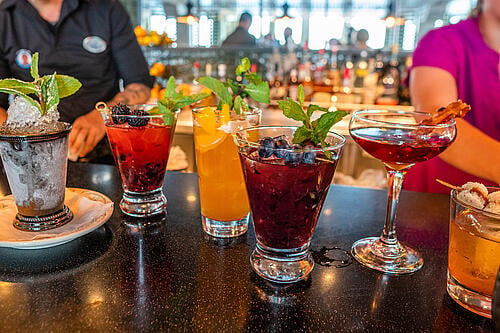
Odyssey of the Seas and Wonder of the Seas share the following bars and lounges:
- Giovanni’s Wine Bar
- The Lime & Coconut
- English-style pub
- Schooner Bar
- Bionic Bar
- Casino Bar
- Playmakers
- Music Hall
- Boleros
- Solarium Bar
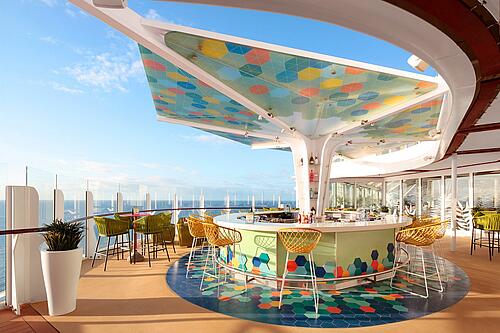
There are several bars and lounges found on Wonder of the Seas and not Odyssey of the Seas:
- The Mason Jar Bar, focusing on moonshine and whiskey drinks inspired by the American south
- Trellis Bar, a small outdoor bar located in Central Park
- Cantina Fresca, a colorful bar connected to El Loco Fresh on the sports deck, specializing in margaritas and aguas frescas
- The Vue, a cantilevered bar in the forward area of the pool deck offering views of the ocean day and night
- Wipe Out Bar, located at the aft of the ship on the sports deck
- Rising Tide Bar, a bar moving up and down through the ship’s Royal Promenade and Central Park neighborhoods
- Spotlight Karaoke, a karaoke venue and bar that also has private rooms to reserve
- The Attic, a comedy club with a selection of comedians each cruise
Entertainment
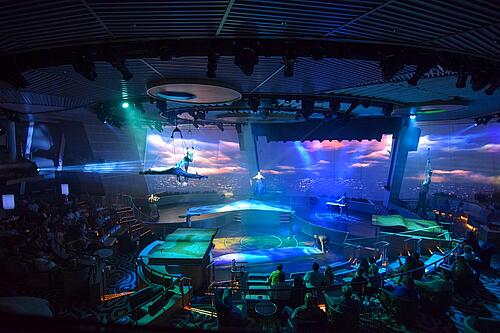
Whether cruising on Odyssey of the Seas or Wonder of the Seas, guests will certainly not get bored, as each ship offers impressive entertainment options.
Both ships have signature entertainment in the Royal Theater as well as live music found throughout the ship at bars and lounges. As the two ships belong to different classes, though, additional entertainment venues differ.
Odyssey of the Seas is home to Two70, an entertainment venue found only on Quantum Class ships. Offering 270 degree views of the ocean from the ship’s aft, this large venue is a popular hangout spot during the cruise both day and night. Technology is a large aspect of shows at Two70, with robotic video screens and 12k projection mapping enhancing set design.
Odyssey of the Seas offers the following signature productions:
- The Book (Two70)
- The Effectors (Royal Theater)
- Showgirls (Royal Theater)
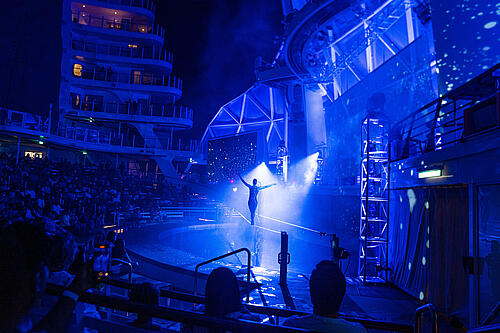
Wonder of the Seas does not have Two70, but is home to Studio B and the AquaTheater.
Studio B is the ice skating rink onboard, featuring a talented cast of professional figure skaters from around the world. Studio B shows incorporate figure skating with projection mapping and tricks including backflips and aerial performances.
Unique to Oasis Class ships, the AquaTheater is where Royal Caribbean’s aquatic shows are performed. AquaTheater shows combine high diving, slacklining, acrobatics, aeralists, and synchronized swimming for a unique performance at sea.
Wonder of the Seas offers the following signature productions:
- inTENse (AquaTheater)
- Voices (Royal Theater)
- The Effectors II: Crash ‘n’ Burn (Royal Theater)
- 365: Seasons on Ice (Studio B)
Pool deck
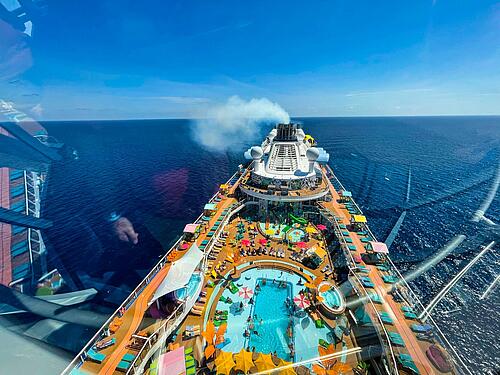
The pool decks on Odyssey of the Seas and Wonder of the Seas share many similarities with each other as they both follow Royal Caribbean’s new Caribbean pool deck design. Colorful seating and decor brings a tropical vibe to the pool deck, which also features the Lime & Coconut Bar and private casitas available to reserve.
Despite similar decor, though, the pool deck layout of an Oasis Class ship differs quite a bit compared to a Quantum Class ship. Wonder of the Seas has a split pool deck design, as the open-air Central Park neighborhood is in the middle of the ship.
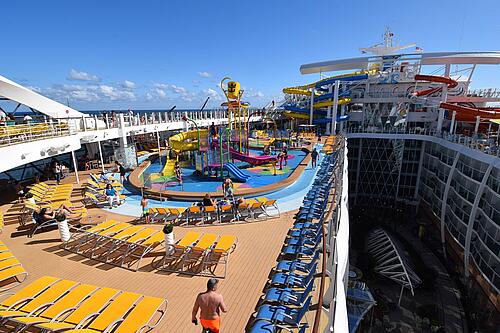
There are three outdoor pools on the Wonder of the Seas pool deck and one Splashaway Bay. Odyssey of the Seas has two outdoor pools in addition to Splashaway Bay. Both ships have several jacuzzis on the pool deck and plenty of seating.
Wonder of the Seas has more pool deck seating options available than Odyssey of the Seas, as the ship features a movie screen viewing area complete with padded lounge chairs and benches.
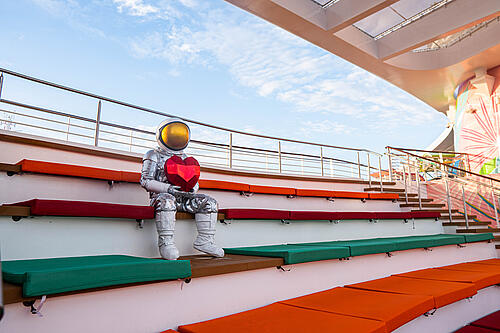
Odyssey of the Seas, as a Quantum Class ship, does not have any water slides and most of the ship’s signature activities are located in the SeaPlex and sports deck area. Wonder of the Seas has the Perfect Storm slides: two racing slides and one champagne bowl slide.
The Solarium on either ship is large, fully enclosed, and more similar than different, offering a pool, several jacuzzis, Solarium bridge wings, comfy seating, and the Solarium Bistro.
Onboard activities
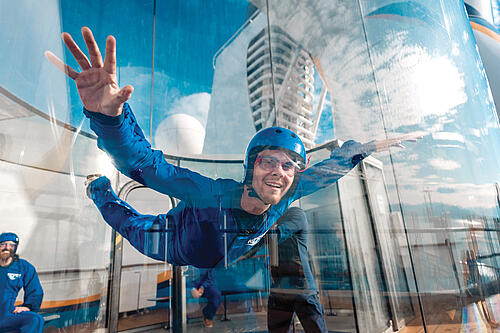
Odyssey of the Seas and Wonder of the Seas may offer different signature activities onboard, but both ships provide a wide range of fun for guests of all ages.
Odyssey of the Seas offers the following signature activities:
- The North Star, an observation pod that rises 300 feet above sea level from the pool deck, offering 360 degree views of the ship, ocean, and ports
- RipCord by iFLY, an indoor skydiving simulator
- Zone Zero, a virtual reality zone in which guests walk through and interact with a virtual world
- Sky Pad, a bungee jumping arena with an optional virtual reality feature
- Bumper cars
- Roller skating
- Circus school
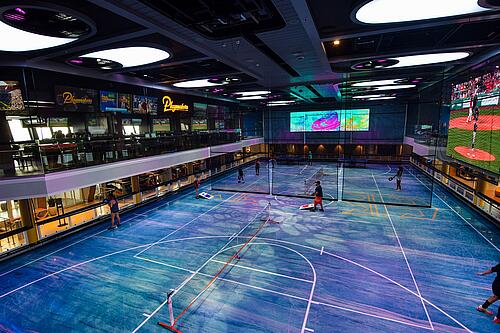
Many activities on Odyssey of the Seas are located within the SeaPlex, an indoor sports area with a court for sports like basketball and volleyball, an arcade, and the Playmakers Sports Bar. Signature activities like Zone Zero, bumper cars, roller skating, and circus school are found in the SeaPlex.
Most activities offered on Odyssey of the Seas are included in your cruise fare, although there are a few exceptions. Zone Zero comes at a cost of $18 per person. The North Star and RipCord by iFLY offer both complimentary and extra cost options. To score a complimentary time slot, be sure to reserve a time for the activity on the Royal Caribbean app as soon as you get onboard, as they can fill up quickly.
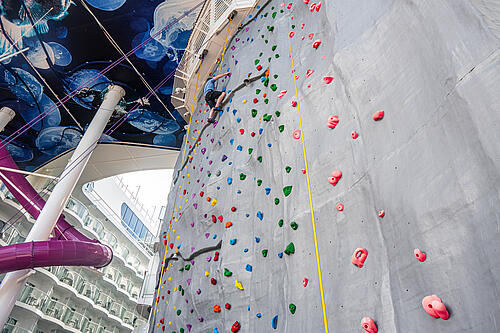
Wonder of the Seas offers the following signature activities:
- The Ultimate Abyss, a dry slide taking guests from the sports deck to the Boardwalk neighborhood
- The zipline, where guest fly nine decks above the Boardwalk neighborhood
- A carousel
- Wonder Playscape, an underwater-themed playground for children
- Ice skating
- Mini golf
- Sports court (outdoors)
- Water slides
All signature activities on Wonder of the Seas are included in your cruise fare. An escape room is set to be constructed but has not been built yet.
Both ships offer one FlowRider surf simulator and rock climbing. Two rock climbing walls are found on Wonder of the Seas. In addition, both ships have the revamped Adventure Ocean programming, including a teens-only outdoor deck space.
Odyssey of the Seas itineraries
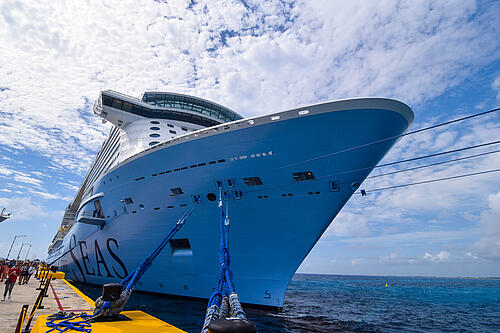
Odyssey of the Seas splits her time sailing from Ft. Lauderdale and Rome, offering cruises to the Caribbean and southern Mediterranean. She sails from Rome between May and October.
Itinerary highlights for Odyssey of the Seas include:
- 7-night Eastern Caribbean Holiday cruise visiting St. Maarten, San Juan, and Labadee
- 6-night Mexico & Perfect Day cruise visiting Costa Maya, Cozumel, and Perfect Day at CocoCay
- 6-night Greek Isles cruise visiting Santorini, Mykonos, and Naples
- 12-night Holy Land cruise visiting Limassol, Jerusalem, Haifa, Ephesus (Kusadasi), Athens, and Naples
Wonder of the Seas itineraries
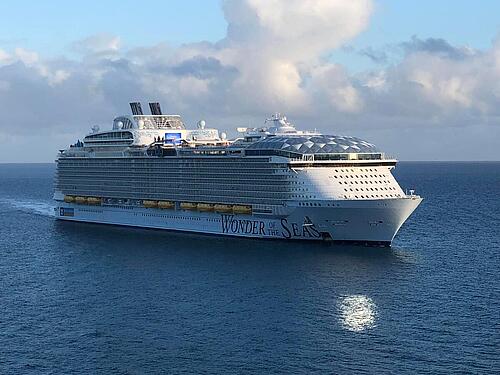
Wonder of the Seas will be homeported in Port Canaveral, Florida starting in November, offering primarily 7-night Western and Eastern Caribbean cruises. During the summer of 2022, Wonder of the Seas is sailing 7-night Western Mediterranean cruises departing from Barcelona and Rome.
Itinerary highlights for Wonder of the Seas include:
- 7-night Eastern Caribbean & Perfect Day cruise visiting Perfect Day at CocoCay, St. Thomas, and St. Maarten
- 7-night Western Caribbean & Perfect Day cruise visiting Perfect Day at CocoCay, Cozumel, Roatan, and Puerto Costa Maya
- 7-night Western Caribbean cruise visiting Rome, Naples, Barcelona, Palma de Mallorca, Marseille, and Florence
Transatlantic cruises are offered on both ships when sailing to and from Europe.
Staterooms
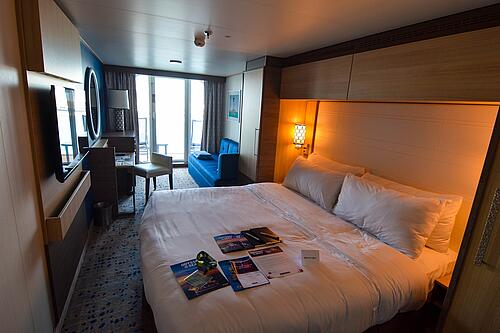
Odyssey of the Seas and Wonder of the Seas both offer a wide range of stateroom choices, from the most basic interior cabins to lavish loft suites.
As Quantum and Oasis Class ships, both ships offer the Royal Suite Class, which offers an upgraded suite experience for guests. From suite lounge access to exclusive dining at Coastal Kitchen, staying in a suite offers a fantastic cruise experience on either ship.
Wonder of the Seas has a few stateroom categories not available on Odyssey of the Seas, though. As the ship has a split middle section, balcony rooms are available in the Central Park and Boardwalk neighborhoods which look down into their respective neighborhoods. Boardwalk view rooms have a partial ocean view whereas Central Park rooms do not.
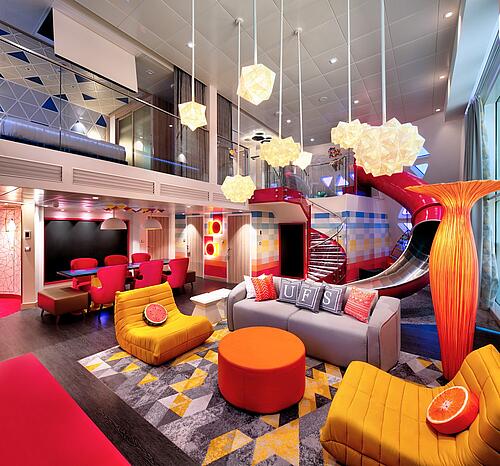
Wonder of the Seas also has the Ultimate Family Suite, which features an in-suite slide, jacuzzi, movie/game room, interactive piano staircase, and more.
As Quantum and Oasis Class ships, both ships offer the Royal Suite Class, which offers an upgraded suite experience for guests. From suite lounge access to exclusive dining at Coastal Kitchen and a private sun deck, staying in a suite offers a fantastic cruise experience on either ship.
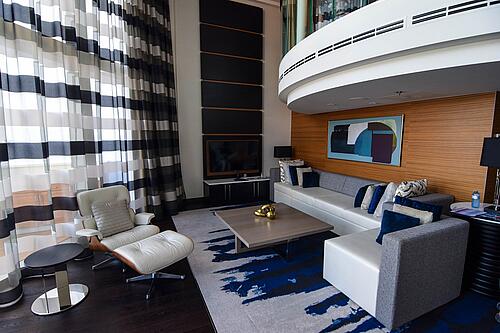
Wonder of the Seas has the separated Suite Neighborhood onboard, which features Coastal Kitchen, the Suite Lounge, and a private deck with a plunge pool, comfy lounges, and a private bar.
Which ship should I choose?
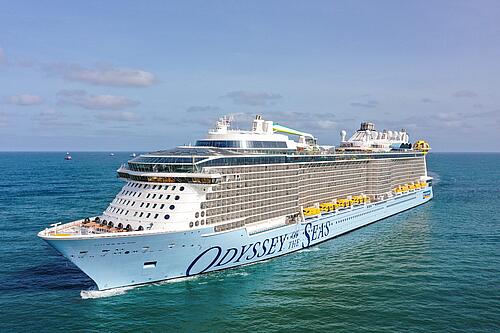
As the newest ships in Royal Caribbean’s fleet, you’re guaranteed to have a top-notch cruising experience whether you choose Odyssey of the Seas or Wonder of the Seas. The ships offer many of the same dining venues, lounges, and onboard experiences.
The layout of Oasis Class ships offer a totally different feel to a cruise when compared to other ships in Royal Caribbean’s fleet. From relaxing with a book in Central Park or hanging out at Playmakers with a sea breeze on the Boardwalk, many cruisers prefer the size of an Oasis Class ship.
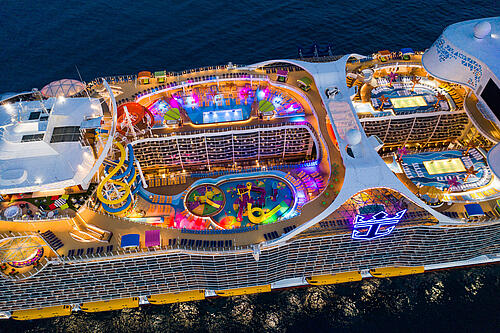
Wonder of the Seas offers an unparalleled amount of dining venues and onboard activities, offering some of Royal Caribbean's most kid-friendly activities like mini golf, water slides, ice skating, the Ultimate Abyss, and the zipline.
Odyssey of the Seas has more of a traditional cruise ship build, as there is no split section in the middle of the ship. Odyssey of the Seas may not be as large as Wonder of the Seas, but some cruisers find they prefer the feel of a Quantum Class ship over Oasis Class.
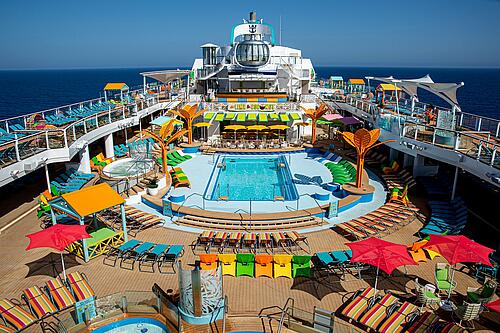
And while there are fewer entertainment venues on Odyssey of the Seas when compared to Wonder of the Seas, there is certainly no shortage of onboard entertainment. Plus, Odyssey of the Seas has several features not found on Oasis Class ships like bumper cars, the North Star, and RipCord by iFLY, which make for interesting onboard activities for guests of all ages.
Ultimately, both Odyssey of the Seas and Wonder of the Seas will offer an unforgettable cruise experience, allowing you to enjoy all of Royal Caribbean's newest amenities, dining, and entertainment.
We recommend watching full ship tours of Odyssey of the Seas and Wonder of the Seas before making your decision, as seeing a full video of the ship can help you decide which ship will work best for your cruise vacation.

